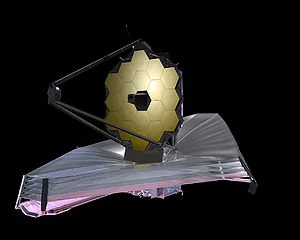INTRODUCTION:
NASA hopes the
New Horizons mission will help us understand worlds at the edge of 0ur solar
system. New Horizons will give us the first close-up look at the dwarf planet Pluto
and venture deep into the distant, mysterious Kuiper Belt – a relic of solar
system formation.
NEW HORIZONS:
New Horizons is an interplanetary space probe that was
launched as a part of NASA's New Frontiers program. Engineered by the Johns
Hopkins University Applied Physics Laboratory (APL) and the Southwest Research
Institute (SwRI), with a team led by S. Alan Stern, the spacecraft was
launched in 2006 with the primary mission to perform a flyby study of the Pluto
system in 2015, and a secondary mission to fly by and study one or more other
Kuiper belt objects (KBOs) in the decade to follow. It is the fifth artificial
object to achieve the escape velocity needed to leave the Solar System.
New
Horizons space probe
·
Operator- NASA
·
Mission duration- Primary mission: 9.5 years
·
Elapsed: 12
years, 9 months, 4 days
·
Launch date- January 19, 2006, 19:00 UTC
·
Rocket- Atlas V (551) AV-010
·
Launch site- Cape Canaveral SLC-41
On January 19, 2006, New Horizons was launched from Cape Canaveral
Air Force Station by an Atlas V rocket directly into an Earth-and-solar escape
trajectory with a speed of about 16.26 kilometers per second (10.10 miles/s;
58,500 km/h; 36,400 mph). At launch, it was the fastest probe ever launched
from earth, but was beaten by the Parker Solar Probe on 12 August 2018. After a
brief encounter with asteroid 132524 APL, New Horizons proceeded to Jupiter,
making its closest approach on February 28, 2007, at a distance of 2.3 million
kilometers (1.4 million miles). The Jupiter flyby provided a gravity assist
that increased New Horizons' speed; the flyby also enabled a general test of
New Horizons' scientific capabilities, returning data about the planet's
atmosphere, moons, and magnetosphere.
Most of the post-Jupiter voyage was spent in hibernation mode
to preserve on-board systems, except for brief annual checkouts. On December 6,
2014, New Horizons was brought back online for the Pluto encounter, and
instrument check-out began. On January 15, 2015, the New Horizons spacecraft
began its approach phase to Pluto.
On July 14, 2015, at 11:49 UTC, it flew 12,500 km (7,800 miles)
above the surface of Pluto, making it the first spacecraft to explore the dwarf
planet. On October 25, 2016, at 21:48 UTC, the last of the recorded data from
the Pluto flyby was received from New Horizons. Having completed its flyby
of Pluto, New Horizons has maneuvered for a flyby of Kuiper belt object
(486958) 2014 MU69, expected to take place on January 1, 2019, when it will be
43.4 AU from the Sun. In August 2018,
THE JOURNEY TO PLUTO
The three billion mile trip to Pluto
took almost 10 years. It takes light 4.5 hours to travel the same distance.
1. Jan, 2006:
New Horizon spacecraft launched from Cape Canaveral.
2. Feb, 2007:
Spacecraft gets slingshot gravity boost from Jupiter.
3. 2007-2014:
For most of the 8-year trek from Jupiter to Pluto, the spacecraft is in a state
of hibernation.
4. Dec. 2014:
Spacecraft awakens from hibernation to begin its mission.
5. July 2015:
New Horizons will pass within 6200 miles of the frozen dwarf planet.
6. 2017-2020:
Pending NASA approval, the spacecraft will be directed toward one or more
Kuiper Belt objects beyond Pluto.
PRIMARY MISSION OBJECTIVES:
Sending a spacecraft on this long
journey will help us answer some basic questions about Pluto:
·
What does the surface look like?
·
What is the chemical composition of the surface?
·
What is the makeup of Pluto’s atmosphere?
PLUTO
The largest Object in the Kuiper Belt is now considered a
dwarf planet. Like other Kuiper Belt objects, Pluto is primarily made of rock
and ice.
WHY PLUTO IS NOT A PLANET?
A planet has to be the basic dominant gravitational body in
its orbit, Pluto fails to meet this criteria, as there are many objects similar
to Pluto in and around its orbit. Pluto is only about 0.07 times the mass of
other objects in its orbit. In comparison, Earth has 1.7 million times the mass
of other objects in its orbit.
ICE DWARFS are
ancient relics that formed over 4 billion years ago and are considered
planetary embryos whose growth stopped. Since they are the bodies out of which
the larger planets accumulated, they have a great deal to teach us about
planetary formation.
OTHER KUIPER BELT OBJECTS:
COMPLETING A MISSION
Having completed its flyby of Pluto, New Horizons has
maneuvered for a flyby of Kuiper Belt object (486958) 2014MU69, expected
to take place on January 1, 2019, when it will be 43.4 AU from the Sun.
The United States has been the first nation to reach every
planet from mercury to Neptune with a space probe. If New Horizons is
successful, the US will have completed the initial reconnaissance of the solar
system.
SUBMITTED
BY:
Likhitha
Malavika
Meghana
Mithuna P
NamithaREFERENCE:
Internet
Tell Me Why? Magazine
Journal

















